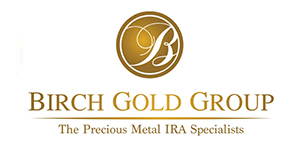Understanding IRA Gold Accounts: A Complete Study

Lately, the idea of investing in gold by way of Individual Retirement Accounts (IRAs) has gained significant traction amongst investors in search of to diversify their portfolios and hedge against economic uncertainty. This report delves into the intricacies of IRA gold accounts, exploring their benefits, regulations, types, and the concerns one must take into consideration before investing.
What is an IRA Gold Account?
An IRA gold account is a specialised sort of Particular person Retirement Account that enables buyers to hold bodily gold and different treasured metals as a part of their retirement financial savings. Not like traditional IRAs, which usually consist of stocks, bonds, and mutual funds, gold IRAs allow individuals to spend money on tangible belongings that have traditionally maintained their value, notably throughout intervals of economic instability.
Forms of IRA Gold Accounts
There are two major types of gold IRAs: Traditional Gold IRAs and Roth Gold IRAs.
- Traditional Gold IRA: The sort of account allows individuals to invest pre-tax dollars. Taxes are deferred till the funds are withdrawn during retirement, at which level they are taxed as abnormal revenue. This can be advantageous for many who anticipate being in a lower tax bracket upon retirement.
- Roth Gold IRA: In contrast, Roth Gold IRAs are funded with after-tax dollars. Whereas contributions will not be tax-deductible, certified withdrawals during retirement are tax-free. This is especially helpful for younger investors who expect their tax rates to extend in the future.
Benefits of IRA Gold Accounts
Investing in gold via an IRA comes with a number of benefits:
- Diversification: Gold serves as a hedge in opposition to inflation and market volatility. By including gold in an funding portfolio, people can cut back their general threat exposure.
- Tangible Asset: In contrast to stocks or bonds, gold is a bodily asset that individuals can hold. This facet can provide a way of security, particularly throughout economic downturns.
- Safety Against Currency Devaluation: As fiat currencies fluctuate, gold usually retains its value. During times of financial instability or geopolitical turmoil, gold has historically been a protected haven for traders.
- Tax Advantages: Gold IRAs provide the same tax benefits as traditional and Roth IRAs, providing a tax-environment friendly strategy to invest in valuable metals.
Rules and Compliance
Investing in gold via an IRA is topic to strict regulations set forth by the internal Revenue Service (IRS). A couple of key laws embrace:
- Eligible Metals: The IRS solely permits sure types of gold and precious metals to be held in an IRA. These embrace:
– Gold bullion coins with a minimum purity of 99.5%
– Gold bars produced by a nationwide government mint or accredited refiner
– Different authorised precious metals, resembling silver, platinum, and palladium, with similar purity necessities.
- Custodian Requirement: All IRA gold accounts have to be managed by a certified custodian. These custodians are liable for holding the physical gold, guaranteeing compliance with IRS rules, and managing the account’s administrative tasks.
- Storage: The IRS mandates that physical gold must be stored in an authorized depository. Investors can’t take possession of the gold instantly; it should be held in a secure location to maintain the tax-advantaged standing of the IRA.
- Contribution Limits: Like different IRAs, there are annual contribution limits for gold IRAs. For 2023, people can contribute as much as $6,500 per yr, with an extra $1,000 catch-up contribution for these aged 50 and older.
Considerations Before Investing
While IRA gold accounts current several advantages, potential investors should fastidiously consider the next components:
- Charges: Gold IRAs usually incur greater fees in comparison with conventional IRAs. These fees could embody account setup charges, annual maintenance fees, storage charges, and transaction fees. It is important to understand the charge structure earlier than committing to an funding.
- Market Volatility: While gold is commonly seen as a stable funding, its price can nonetheless be unstable. Traders ought to be prepared for fluctuations in gold prices and understand that past performance does not assure future outcomes.
- Liquidity: Selling gold could be less easy than liquidating stocks or bonds. Traders ought to bear in mind of the potential challenges in changing bodily gold into cash, especially during market downturns.
- Long-Term Commitment: Gold IRAs are designed for long-term retirement financial savings. Traders should have a clear strategy and be prepared to hold their investments for an extended interval to maximize potential returns.
Conclusion
IRA gold accounts provide a singular alternative for buyers to diversify their retirement portfolios with valuable metals. By understanding the kinds of gold IRAs, the advantages and rules involved, and the concerns to keep in mind, people can make informed decisions about incorporating gold into their retirement financial savings strategy. As with every funding, it’s advisable to conduct thorough research and seek the advice of with monetary advisors to ensure alignment with one’s general monetary objectives and risk tolerance. With the potential for economic uncertainty on the horizon, gold IRAs might serve as a worthwhile asset in safeguarding wealth for the long run.

